7 Best Monitors for Designers in 2025: Detailed Reviews & Comparison
Choosing the right monitor is vital for designers focused on color accuracy, detail, and comfort. This guide reviews 7 top-rated 4K and QHD monitors for graphic and web designers in 2025, comparing features, pros, and cons to help you find the best fit for your creative workflow and budget.
Selecting a high-quality monitor is a crucial decision for any graphic or web designer. The choice of display directly impacts color accuracy, comfort during long work sessions, and your ability to catch even the smallest project details. For professional work, IPS panels are generally recommended as they deliver the most accurate color reproduction and wide viewing angles (VA panels are slightly inferior, and TN panels are not suitable). Screen size and resolution also matter: for serious design work, a monitor between 27 and 32 inches is ideal, allowing you to arrange multiple windows and see more detail at once. High resolutions such as QHD or 4K ensure crisp images-especially important for working with fine graphics and retouching. Below, you'll find our top 7 monitors for designers in 2025 (all under ~$900), with key specs, pros, and cons for each.
1. Dell UltraSharp U2723QE (27″)
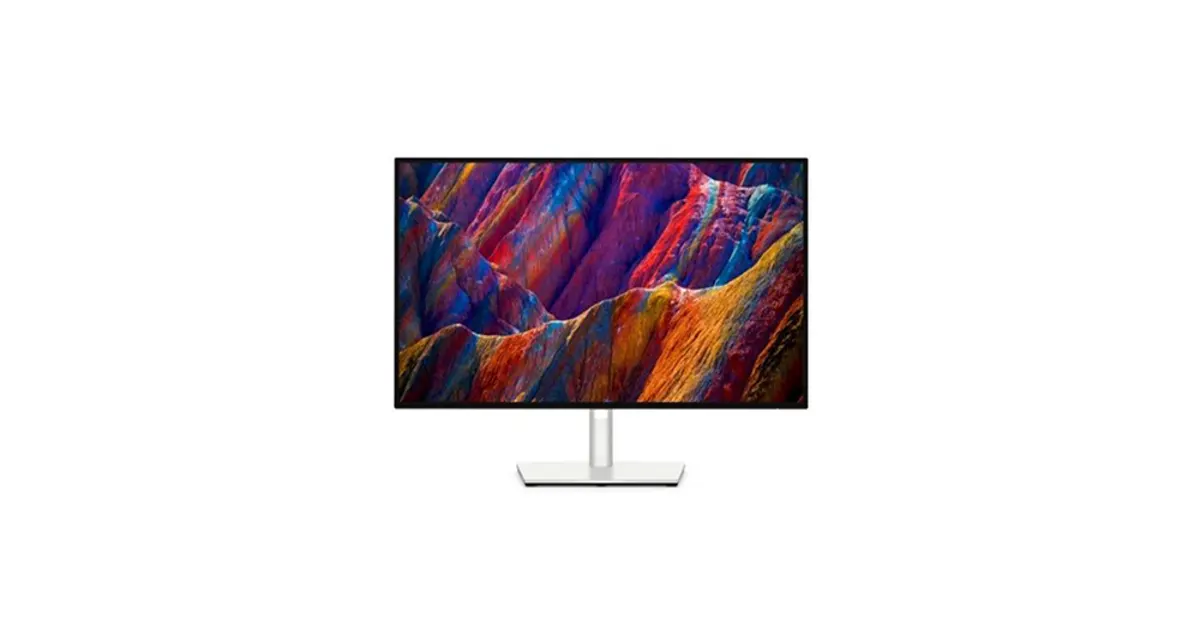
Specifications: 27-inch IPS Black panel with 4K UHD (3840×2160) resolution, enhanced contrast, anti-glare coating, and 178° wide viewing angles. Brightness: 400 nits (VESA DisplayHDR 400 certified), 60Hz refresh rate, ~5ms response time. Covers 100% sRGB, 98% DCI-P3, ~94% Adobe RGB. Supports HDR10. Stand is fully adjustable (height up to 15 cm, pivot, tilt). Ports: HDMI 2.0, DisplayPort 1.4, USB-C (DP Alt Mode, Power Delivery), USB 3.2 hub (4 ports), RJ-45, audio out.
Pros:
- Outstanding color accuracy and wide gamut (98% DCI-P3, HDR10) for precise color work.
- IPS Black panel offers deeper blacks and higher contrast than standard IPS.
- Excellent ergonomics: slim bezels, fully adjustable stand (pivot, tilt, height), VESA mountable.
- Comprehensive connectivity: USB-C with charging, USB hub, LAN-ideal for laptops and peripherals.
- Eye-care features: flicker-free and low blue light modes reduce eye strain.
Cons:
- No built-in speakers-audio only via external sources.
- 60Hz refresh rate is fine for design but not suited for high-frame-rate gaming.
Approximate price: $650-700.
2. BenQ DesignVue PD3205U (31.5″)
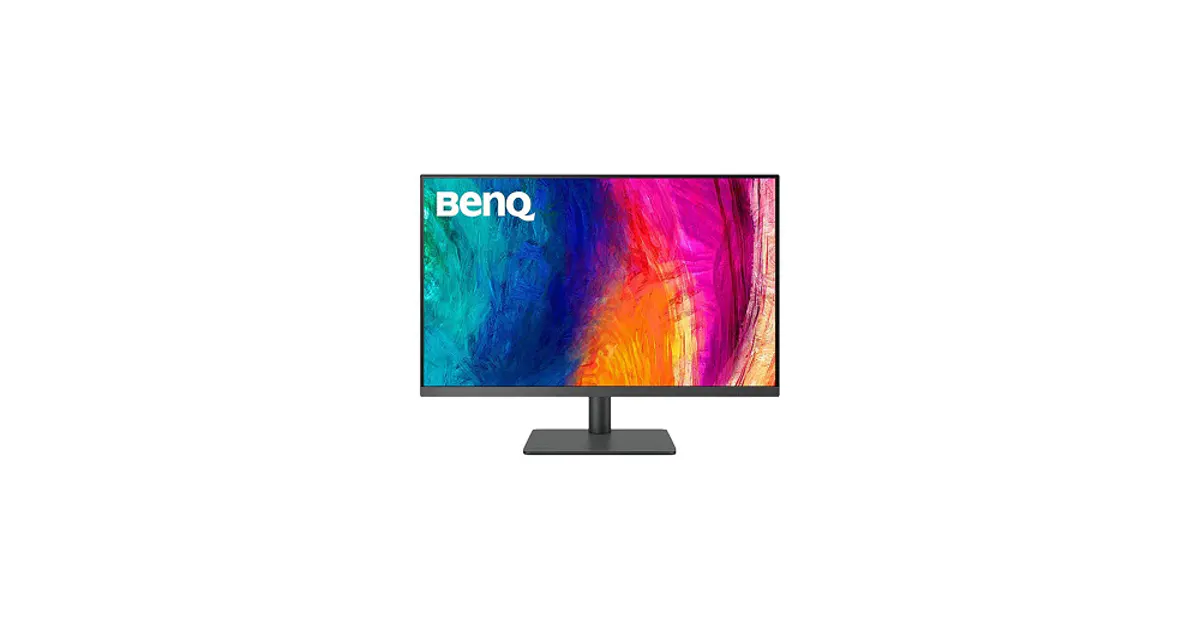
Specifications: 31.5-inch 4K IPS monitor from the DesignVue series with factory calibration for color-critical work. Pantone Validated and Calman certified (Palette Master), ensuring colors match print standards and remain consistent. Brightness: 350 nits, contrast: 1000:1, 60Hz refresh, 5ms response. 99% sRGB/Rec.709 color coverage-ideal for web and video graphics. HDR10 supported. DualView mode for side-by-side color profile comparison; M-Book mode syncs colors with MacBook displays. Ergonomic stand (height, tilt, portrait, swivel). Ports: HDMI 2.0, DP 1.4, USB-C (90W PD), 3×USB 3.2, 2×USB Type-B, audio out. Built-in 2×3W speakers.
Pros:
- Top-tier color accuracy: factory calibration, Pantone SkinTone support, Calman verification (ΔE<2).
- HDR10 and 10-bit color depth (1.07 billion colors) for a wide dynamic range.
- Eye-friendly: flicker-free and Low Blue Light technology for comfortable extended use.
- Single-cable USB-C connectivity with charging and USB hub-KVM functionality for two PCs.
- DualView for on-screen side-by-side color profile comparison-great for color grading and layout checks.
Cons:
- Average sound quality-external speakers recommended for audio work or music.
- Limited Adobe RGB coverage-geared mainly for sRGB/Rec.709 standards; for full Adobe RGB, consider BenQ SW series.
- Price is near the upper limit (~$950), justified by features but significant for some budgets.
Approximate price: $900-1,000.
3. ViewSonic ColorPro VP3256-4K (32″)
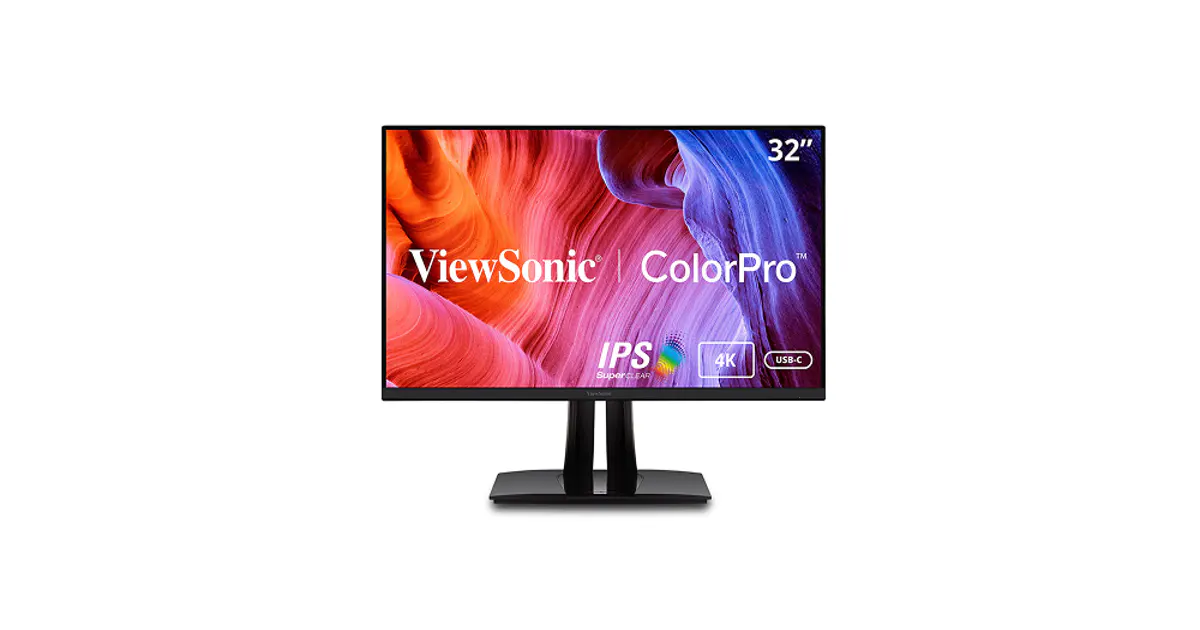
Specifications: 32-inch 4K professional IPS monitor with ultra-thin bezels-great for multi-monitor setups. Factory calibrated, Pantone Validated. Brightness: 350 nits, contrast: 1000:1. Wide color gamut: 128% sRGB, 95% Adobe RGB, 95% DCI-P3. Pantone Matching System support for print designers. HDR10 supported. 60Hz refresh, 5ms response. Adaptive Sync (FreeSync), flicker-free, Low Blue Light. Designer Mode for quick profile switching. Adjustable stand (tilt -5°...21°, swivel 60°, pivot 90°, height ~13 cm). Ports: 2×HDMI 2.0, 1×DisplayPort 1.4, USB-C (60W PD), USB-A (2), USB-B, audio out. Built-in 2×5W speakers (average quality).
Pros:
- Extensive color coverage: ~95% AdobeRGB & DCI-P3, 100% sRGB-suitable for print and digital design.
- Pantone Validated for reliable color accuracy.
- Multiple modes and settings: Designer Mode, HDR10 support for high-contrast content.
- Versatile ergonomics: flexible height, tilt, portrait mode.
- Universal USB-C port with 60W power for convenient laptop connection.
Cons:
- Complex OSD menu-initial setup can take time.
- Average built-in speaker quality-external speakers recommended for media work.
Approximate price: $700.
4. Xiaomi Mi 4K Monitor 27″ (A27U)
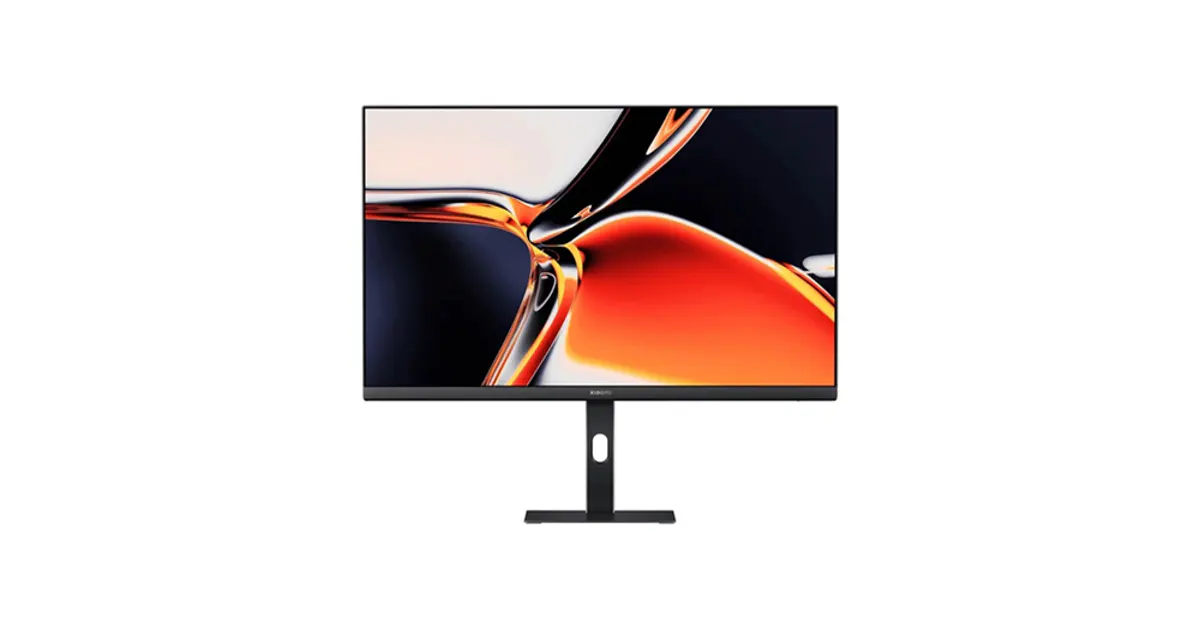
Specifications: 27-inch 4K IPS monitor from Xiaomi, balancing pro features with affordability. Wide color gamut: 99% Adobe RGB, 99% DCI-P3, 100% sRGB. Pantone Validated, factory calibrated (ΔE<1). Brightness: ~400 nits (HDR400), contrast: 1000:1, 10-bit color (8-bit + FRC). 60Hz refresh, 6ms GTG. Anti-glare, 178° viewing angles. Multi-functional USB-C port (DP Alt Mode, 90W charging), 2×HDMI 2.1 (4K@60Hz), 1×DisplayPort, 2×USB 3.0, audio out. Metal stand with height, tilt, and pivot adjustments. Minimalist design with slim bezels.
Pros:
- Professional color gamut: nearly full Adobe RGB & DCI-P3-ideal for print, branding, film work.
- High brightness and contrast for IPS; HDR10 support for dynamic visuals.
- 90W USB-C: single-cable 4K video and laptop charging.
- Ergonomic: adjustable height, tilt, portrait mode for comfortable setup.
- Excellent value: premium specs (AdobeRGB 99%, 4K, USB-C) at a significantly lower price point.
Cons:
- 60Hz refresh-adequate for design, less so for gaming.
- Xiaomi is a newer brand in professional monitors, though user reviews are positive.
- No built-in speakers-use headphones or external audio (headphone jack included).
Approximate price: $330.
5. LG UltraFine 27UP850N-W (27″)
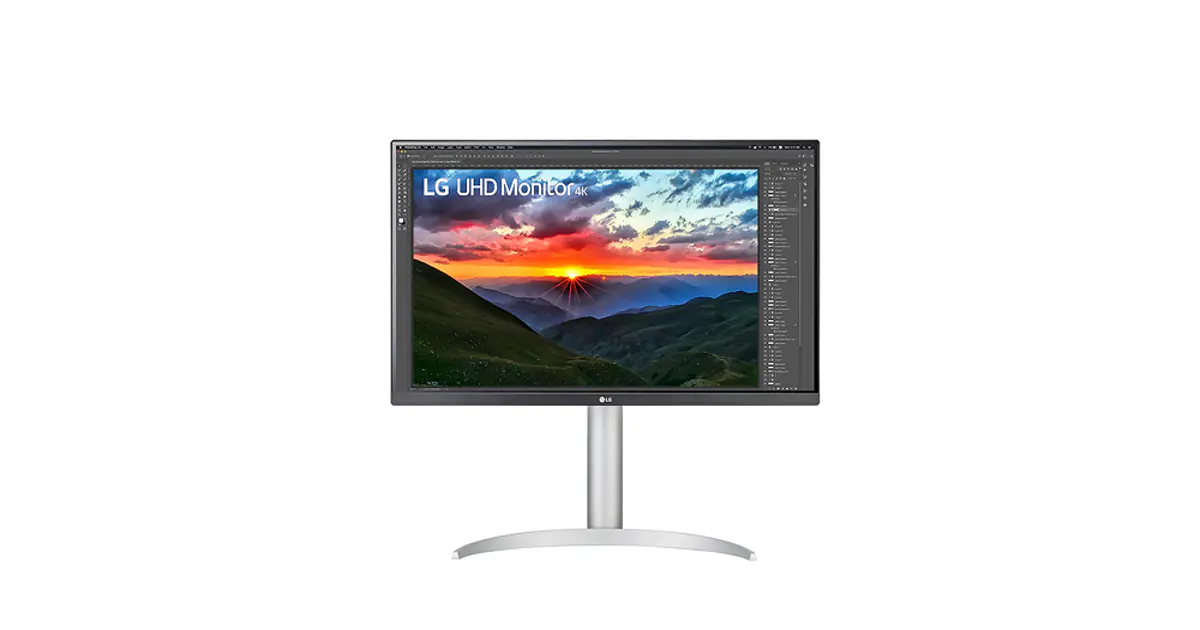
Specifications: 27-inch 4K IPS monitor from LG's UltraFine line. Resolution: 3840×2160, high brightness (400 nits, DisplayHDR 400 certified), contrast: 1200:1 (dynamic up to 5M:1). Color coverage: 95% DCI-P3, ~130% sRGB (~75% Adobe RGB). Supports HDR10 and AMD FreeSync (up to 60Hz). 5ms GTG response. Features built-in hardware calibration and LUT hardware calibration for professional color accuracy. Eye-care: flicker-free and Low Blue Light. Metal/plastic ergonomic stand (height with gas lift, tilt, pivot, but no swivel). Ports: 2×HDMI 2.0, 1×DisplayPort 1.4, USB-C (Thunderbolt Alt Mode, 60W PD), 2×USB 3.0 Type-A, audio out. No built-in speakers (external audio supported).
Pros:
- High clarity and brightness: 4K at 27″ (~163 PPI) delivers crisp visuals; 400 nits brightness is great for HDR and bright rooms.
- Accurate color: factory and hardware calibration (95% DCI-P3). Ideal for web, illustration, and video editing.
- Easy connectivity: Thunderbolt/USB-C for MacBook/laptop (image + 60W charging), USB hub for peripherals.
- Eye protection: flicker-free tech and reading mode reduce eye fatigue.
- Modern design: three-sided borderless screen, sleek stand-fits any workspace.
Cons:
- Stand does not swivel-monitor must be moved to change horizontal angle.
- Average Adobe RGB coverage (~75%)-sufficient for digital, less so for print.
- No built-in speakers-common among pro models.
Approximate price: $440-500.
6. Philips 278B1 (27″)
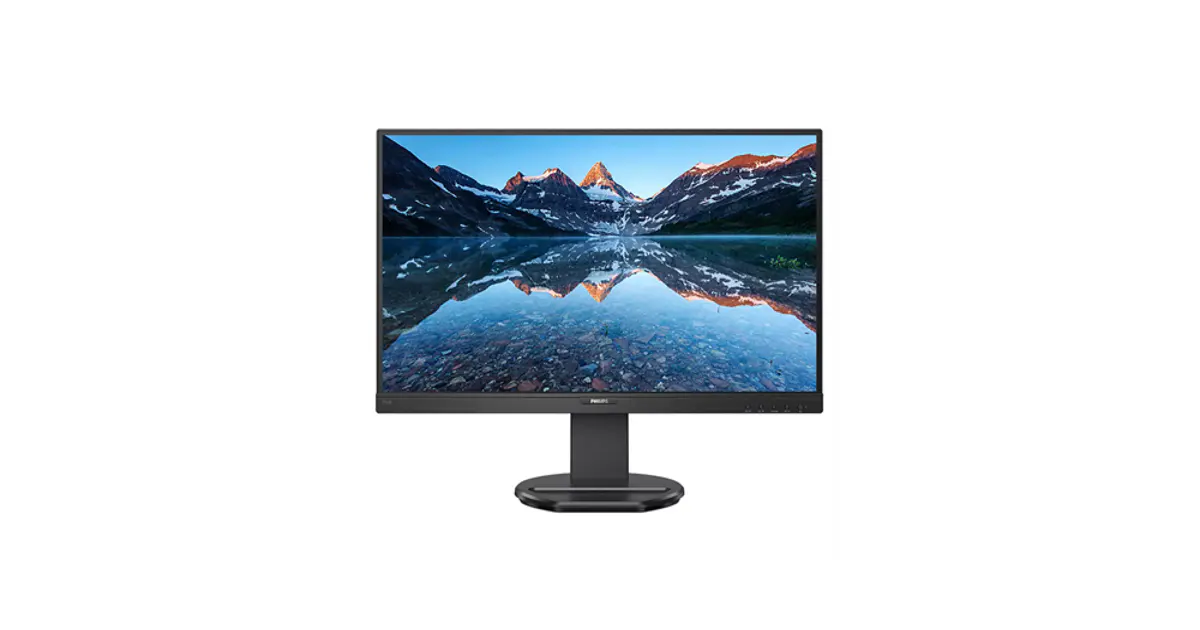
Specifications: 27-inch 4K IPS monitor from Philips B Line, aimed at professionals and office users. Resolution: 3840×2160, brightness: 350 nits, contrast: 1000:1. Key feature: PowerSensor presence detector, which automatically dims the screen when you step away, saving up to 65% energy and extending panel life. UltraClear UHD tech ensures sharp, bright images. 60Hz refresh, 4-5ms response. Near 100% sRGB coverage (not a wide-gamut model, but covers web standards). TÜV Eye Comfort mode, flicker-free, low blue light. Built-in 2×2W speakers. Ports: Thunderbolt 3 (USB-C with video/charging), DisplayPort, HDMI, USB-B uplink + 4×USB-A hub, headphone out. Ergonomic stand (height, tilt, portrait, swivel).
Pros:
- Sharp 4K detail: excellent for small design elements, textures, and fonts.
- PowerSensor energy saving: auto-dims when you leave, saving power and prolonging backlight life-a great "green" feature.
- Versatile connectivity: Thunderbolt (USB-C) and USB hub for easy laptop and device connection.
- Eye comfort: TÜV Eye Comfort, flicker-free, and LowBlue reduce eye fatigue.
- Versatile use: great for graphics, CAD, office, and multimedia-basic speakers, wide viewing angles, vivid colors.
Cons:
- No built-in webcam-some office competitors have one for video calls (external needed here).
- sRGB color only: enough for most design but not for full AdobeRGB needs.
- Sober, utilitarian design-functional but plain for those who value aesthetics.
Approximate price: $330.
7. ASUS TUF Gaming VG289Q (28″)
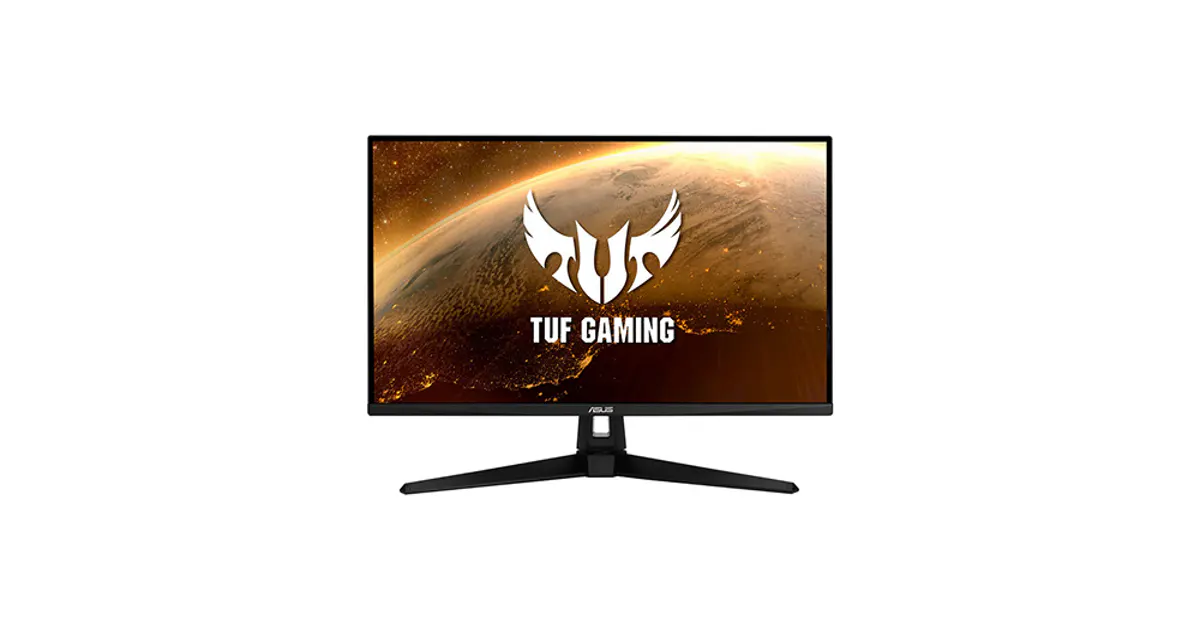
Specifications: Marketed as a gaming monitor, but popular with beginner designers for its price and quality IPS panel. 28-inch 4K IPS display (3840×2160), anti-glare, 350 nits brightness, ~1000:1 contrast. 90% DCI-P3, 100% sRGB coverage, HDR10 support-over 1 billion colors and smooth gradients. 60Hz refresh, 5ms GTG. Gaming features like Adaptive-Sync/FreeSync for tear-free playback (useful for video editing), Shadow Boost for enhancing dark areas. Fully adjustable stand (tilt -5°...20°, pivot, 90° swivel, height). Ports: 2×HDMI 2.0, 1×DisplayPort 1.2, headphone out. Built-in 2×2W speakers.
Pros:
- Affordable 4K IPS: one of the most budget-friendly 28″ 4K IPS monitors-great for students and beginners.
- Good image quality: ~90% DCI-P3 for rich color in its class, HDR10 for better contrast. Natural colors, 178° viewing angles.
- Gaming tech for creatives: Shadow Boost reveals dark details (helpful for photo/video editing), FreeSync for smooth playback.
- Ergonomics & build: all adjustment types, sturdy construction, VESA mountable.
- Low power consumption and minimal heat-quiet and energy efficient.
Cons:
- Minor backlight bleed at the edges-common for budget IPS, but not distracting in normal use.
- Basic speaker quality-headphones or external speakers recommended.
- No USB-C or hub-only standard video inputs; laptops require HDMI/DP connection.
Approximate price: $275-330.
Conclusion
Each of these monitors has proven to be a reliable choice for designers. The best pick depends on your specialty: for web and UX design, sRGB-focused models like the budget-friendly ASUS TUF VG289Q or versatile Philips 278B1 work well. For print and video color grading, choose wide-gamut Adobe RGB/DCI-P3 models (Dell U2723QE, ViewSonic VP3256, or Xiaomi 4K 27). Large 32-inch screens (BenQ PD3205U, ViewSonic) are perfect for multitasking and fine detail, while 27-inch models deliver high pixel density without overloading your GPU. Ultimately, a quality monitor is an investment in your workflow comfort and ensures your designs appear exactly as intended. Compare these options and choose the one best suited to your creative needs and budget.